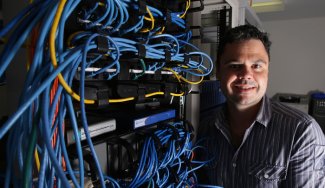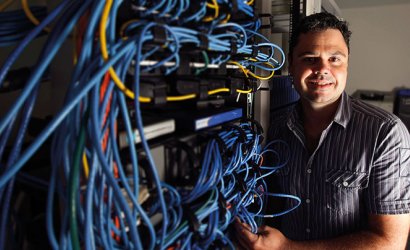

Why choose this course?
Start your career in the fast growing information technology (IT) industry with this qualification. This course will provide you with the knowledge to develop basic network administration skills. You will learn how to provide support in the workplace across a range of information and communication technology (ICT) areas including technical support and network administration.
During your studies you will develop the knowledge and skills in maintaining computer operating systems and hardware, identifying online security threats and operating application software packages. In addition, you will learn how to configure, secure and test system software for a small home office network or small to medium business network.
On completion of this course, you can continue your study with the ICT40120 Certificate IV in Information Technology (Networking).
Career opportunities
- Client Support Officer
- ICT Operations Support
- IT Technician
When choosing a course, it's important to think about the key skills and knowledge you'll need, as well as how you'll be assessed. Take a look at this information and consider if you might face any challenges in meeting the course expectations and requirements.
- Strong client focus and a desire to assist others
- Methodical, disciplined and technically minded
- Excellent analytical and problem-solving skills
- Good communication skills
-
An IELTS score (academic) of 6.0 with no band score less than 5.0 or equivalent.
-
Completion of the equivalent of Australian Year 10.
There may be further semester intakes available for enrolment. You can view any further intakes when you submit your online application(opens in a new tab).
For information about pathways from TAFE to university, view our Pathways to university page.
How to apply
Apply to study at TAFE in six steps:
- find a course;
- check entry requirements;
- submit an application;
- accept your offer and pay;
- apply for your student visa; and
- receive your visa and come to Australia for your studies.
TIWA Course Guide
A guide to studying at TAFE in Western Australia, including study options, facilities and campus locations!
Download study area guide(opens in a new tab)
Contact us(opens in a new tab)
TAFE International Western Australia (TIWA) is the Registered Training Organisation (RTO) and Commonwealth Register of Institutions and Courses for Overseas Students (CRICOS) provider, for the delivery of training to international students, enrolled in a TAFE course in Western Australia. This nationally recognised course is delivered by a Western Australian TAFE college on TIWA's behalf. TIWA retains responsibility for the quality of the training and assessment delivered by the TAFE colleges and for the issue of certification documentation to students.


